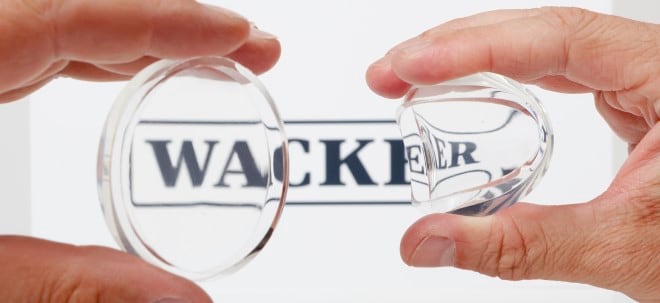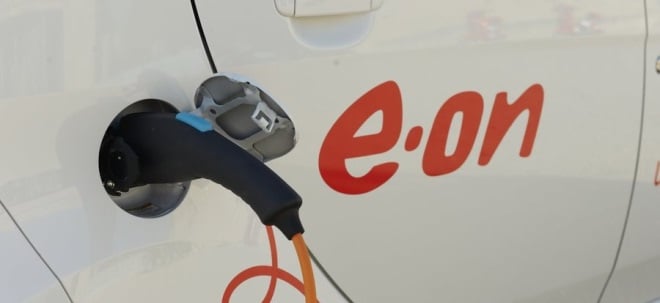Hi,
nicht nur als Apple Fan hier mal ein Push-Versuch. Ich mach's aber nicht selbst, sondern bitte den geneigten Lesern den folgenden Artikel zu lesen. BTW ist dieser noch recht informativ.
Gruß
Frankie in Hollywood
Nachzulesen bei http://www.fool.com/community/views/2000/view001204.htm?ref=yhoolnk
COMMUNITY PERSPECTIVE
What If Apple Never Grew?
Email this page
Format for printing
Become a Fool!
Discussion Boards
Apple Computer
By Eldrehad
December 4, 2000
The following perspective was written by a member of the Fool community and regular contributor to our discussion boards. The opinions of the author are not necessarily representative of the opinions of The Motley Fool or its editorial staff.
I was intrigued by the recent Dueling Fools piece on Apple Computer (Nasdaq: AAPL), so I decided to do the most Foolish of things and take a look for myself. What I found definitely intrigued me, so I thought I'd share it with those of you here. What follows is a simple analysis the financial statement wizards among you will find elementary, but hopefully at least a few of you will benefit from it.
Considering the pummeling Apple has taken recently, I decided to ask myself the question, "If Apple never grew, forever, what should its shares be worth today?"
To answer this question, I needed to know how much of Apple's share price is attributable to its future cash flows, and how much is attributable to its current cash hoard. The Dueling Fool article writer did this very well with the "enterprise value" (EV) calculation, but since it's the basis of my logic I'll run through my calculation anyhow.
First, I took cash and short-term investments, and subtracted from that total the amount of long-term debt on Apple's books. Dividing this sum by the number of shares outstanding, that left me with $10.48 per share for the net liquid equity. Subtracting this figure from the recent share price of $17.00, I'm left with $6.52 per share in enterprise value. In other words, of the $17.00 per share price tag, $10.48 is cash already in Apple's bank account, and the other $6.52 per share it has to go out and earn.
Cash & Equiv $1,191.0
plus ST Invest $2,836.0
equals $4,027.0
minus Total Debt $300.0
equals $3,727.0
divided by Shares Outstanding $355.7
equals $ Per Share for Liquid Equity $10.48
Current Share Price $17.00
$17.00/share minus $10.48/share equals $ per share for future cash flows: $6.52
So, now I know that Apple has to go out and earn me $6.52 per share based on future cash flows. If it never grew again, could it? Well... in doing any discounted future cash flow analysis, I had to come up with a discount rate. For this I blew off the dust from my old finance tome and looked up my old friend, the Capital Asset Pricing Model (since we're old friends, I'll call him CAPM). Basically, CAPM tells me what sort of return a certain capital asset (in this case, Apple stock) should generate on a risk-adjusted basis. My keyboard won't seem to do those funny Greek letters that my finance book used, but the formula looks something like this:
Cost of equity = Risk-free return rate + Beta x (Market Return – Risk-free return rate)
For those of you not yet familiar with my old friend here, what CAPM is telling us is that riskier investments should generate better returns than less-risky ones. Beta is the measurement of risk and represents a particular stock's volatility compared to the market as a whole. For my calculation of the discount rate I used the 30-year U.S. Treasury bond rate as the risk-free rate, 12% as the market return as a whole (the historical average), and I got Apple's beta from MarketGuide. The calculation ended up looking like this:
Cost of equity = 5.63% + 1.19 x ( 12% - 5.63% )
Cost of equity = 13.21%
Now, assuming Apple never grows, we're dealing with another old friend of mine, buried somewhere in my dusty finance book, called a perpetuity (sorry, perpetuity doesn't have a cool nickname like CAPM). A perpetuity, simply defined, is a fixed payment that lasts forever. To find a perpetuity's value is really easy. As an example, let's say I get $10 per year, forever, and the interest rate is 10%. That stream of future cash payments is worth $100. How'd I know? Well, if I took $100 and put it in a bank account that earned 10% per year (we should all be so lucky!) and left it there, at the end of each year the bank would send me a check for $10... forever... as long as I never took my $100 out. The formula looks something like this:
Present value of perpetuity = Amount of yearly cash flow / yearly interest rate
For the above example: $100 = $10 / 10%
What's Apple's present value of its future cash flows if it never grows again? First we need the amount of the yearly cash flow. I averaged Apple's free cash flows from 1996-1999 (2000 was unavailable from the service I use) -- these were $327M, $101M, $729M, and $751M -- which averaged out to be $477M (divided by shares outstanding of 355.7M is $1.34 per share), and the discount or interest rate (13.21%). Using the above model we get something like this:
Present value of perpetuity = $1.34 per share / 13.21%
Present value of perpetuity = $10.15 per share.
Add the $10.15 per share for the future cash flows to the $10.48 per share for cash already in Apple's bank, and we get a value of $20.63 per share. And that's assuming Apple never grows... ever. A nice little 21% premium over today's stock price!
Don't know about you, but I'm seriously thinking of scooping up a few shares. I have a lot more homework to do first, of course, but what I've seen so far seems interesting. My biggest problem is that I'm already fully invested in stocks, so I'd have to sell something to "take a bite" of Apple in my portfolio... a decision for another day I suppose.
|


 Thread abonnieren
Thread abonnieren

